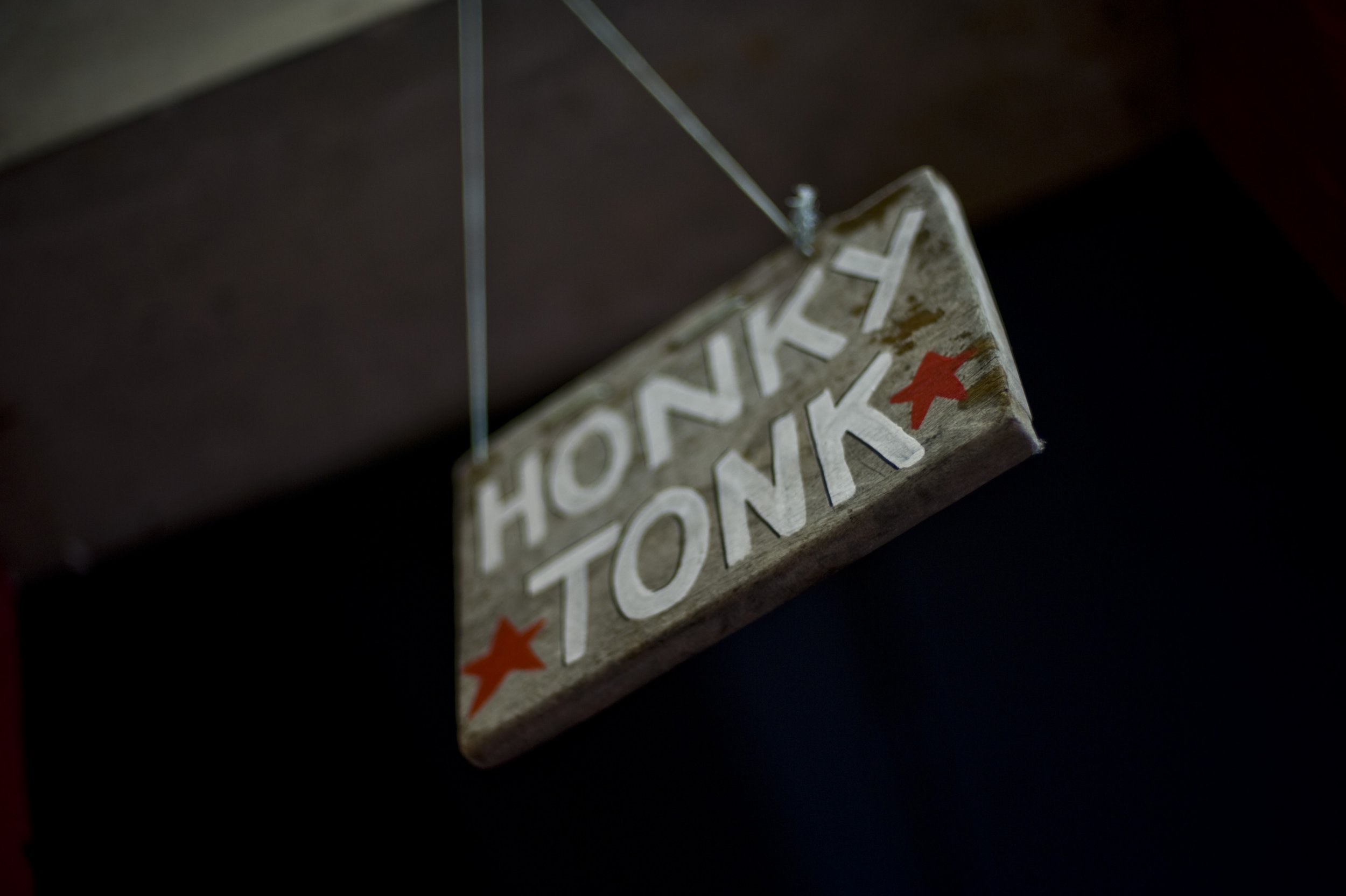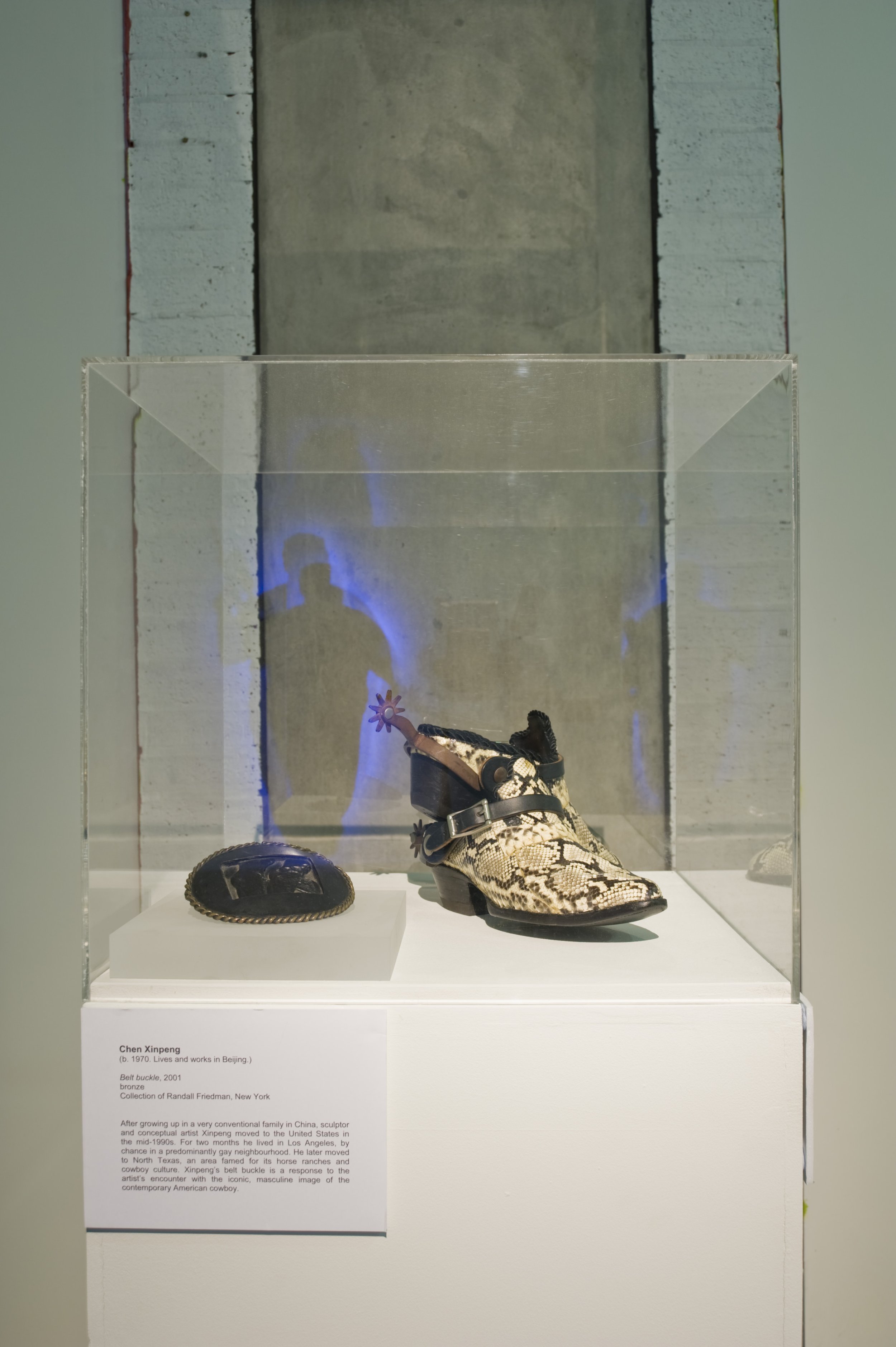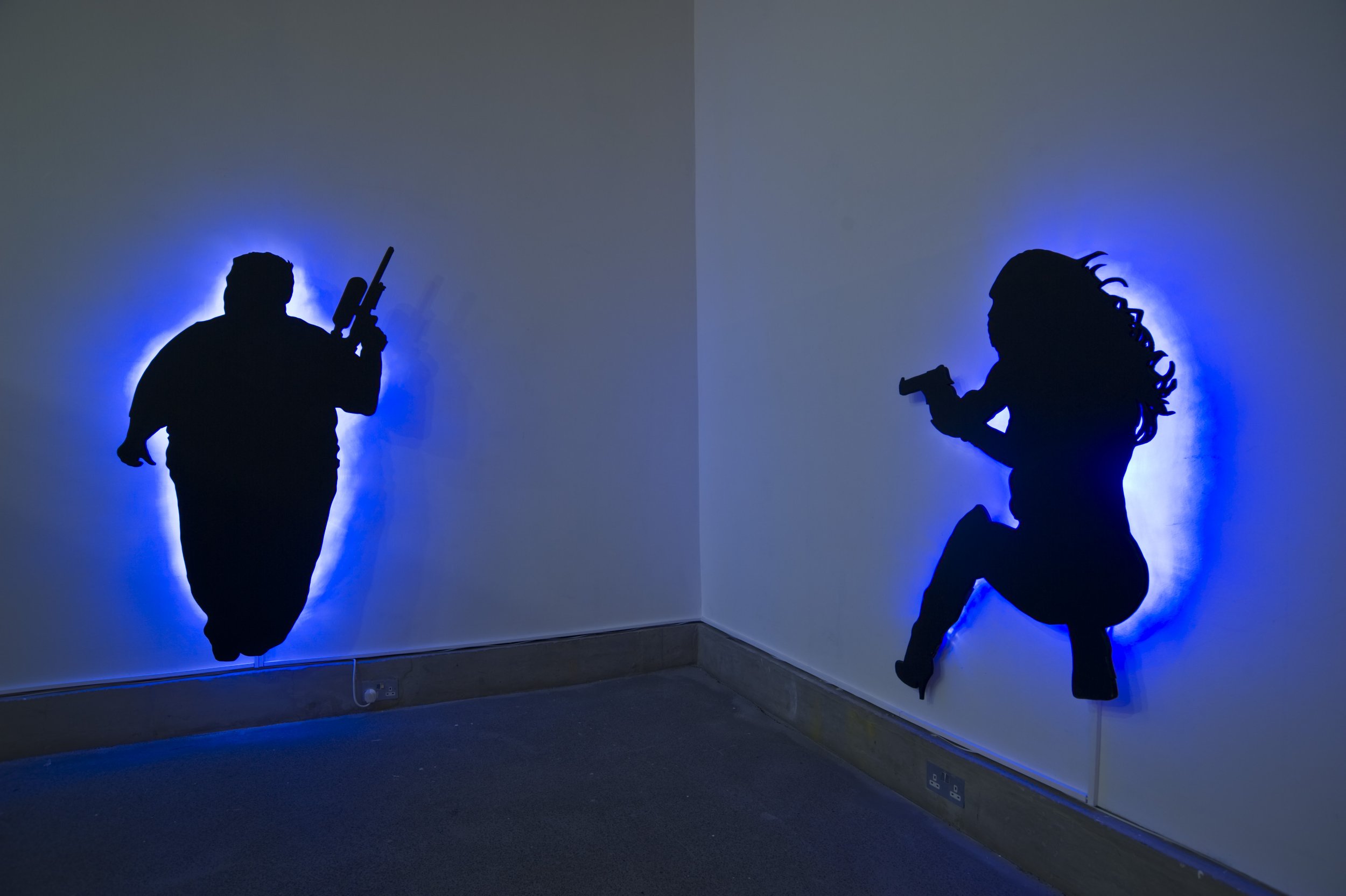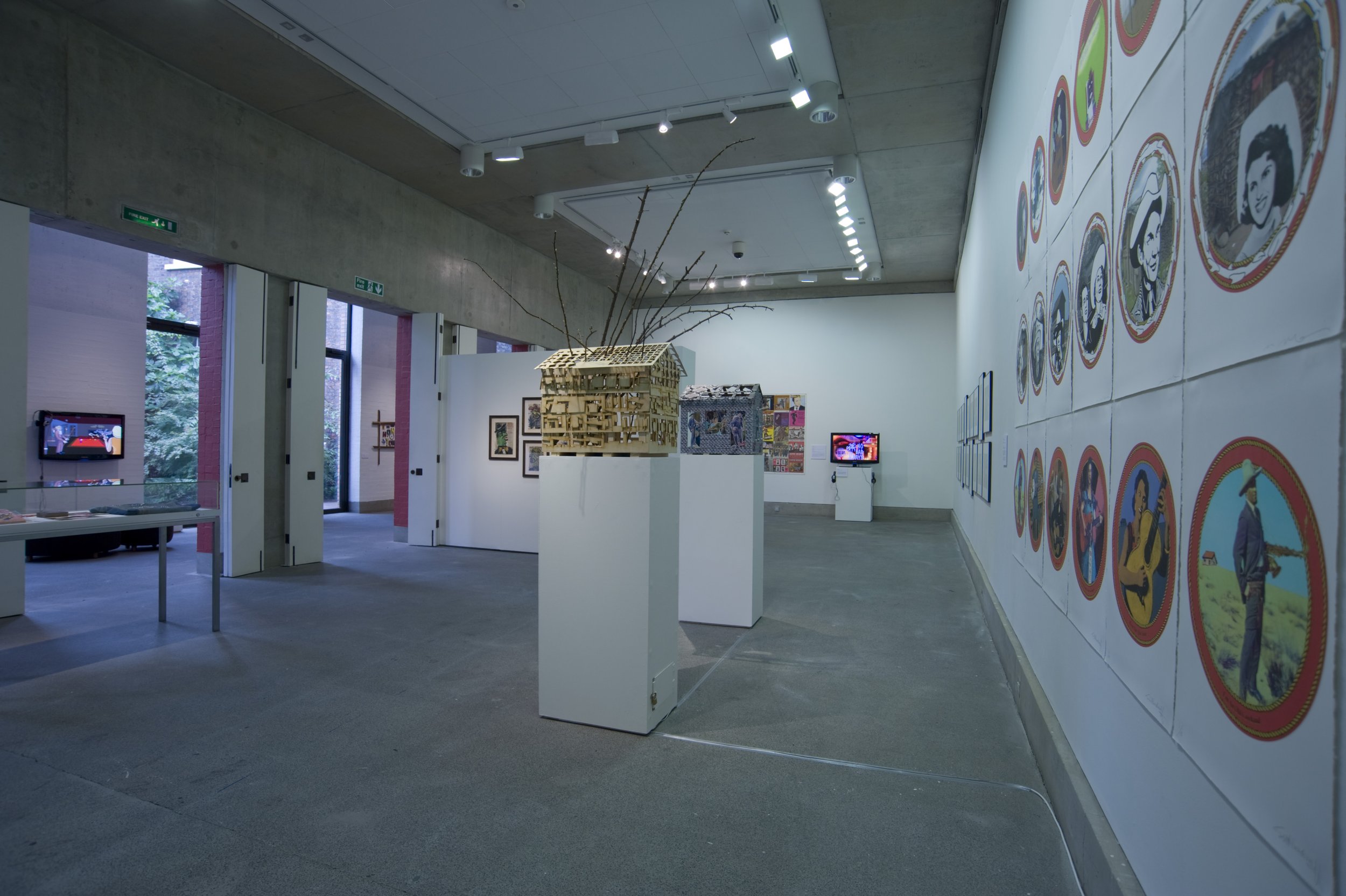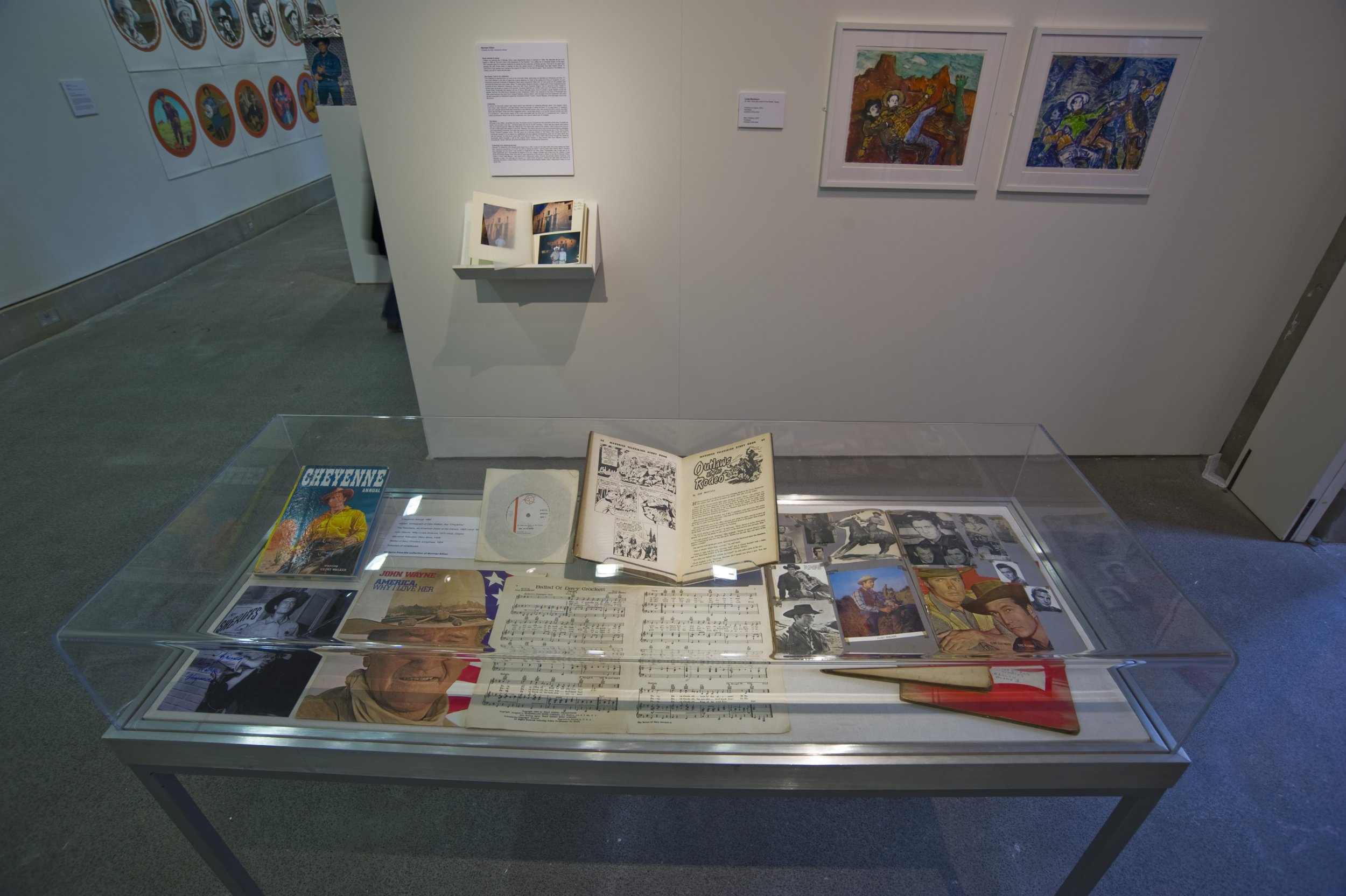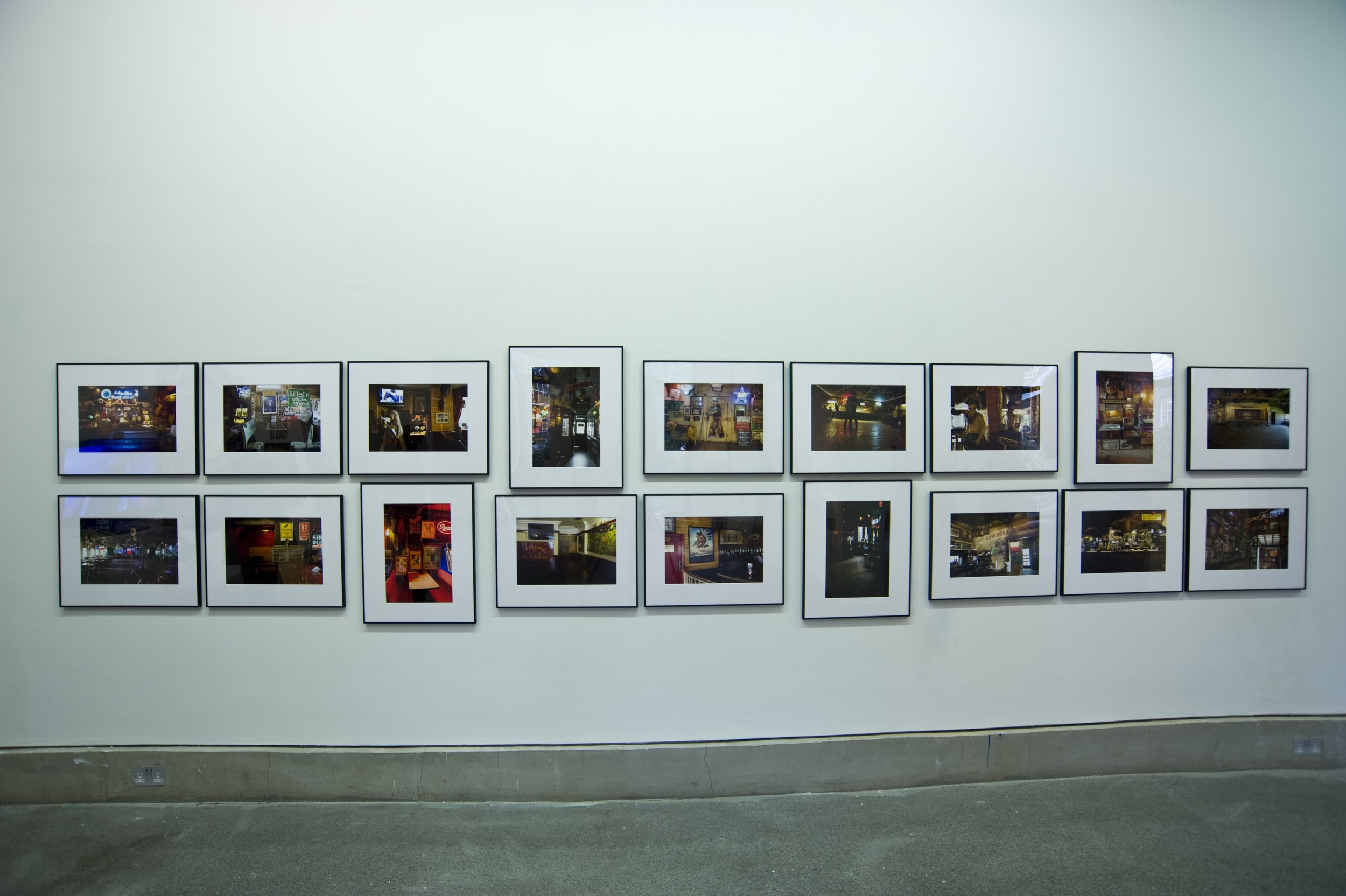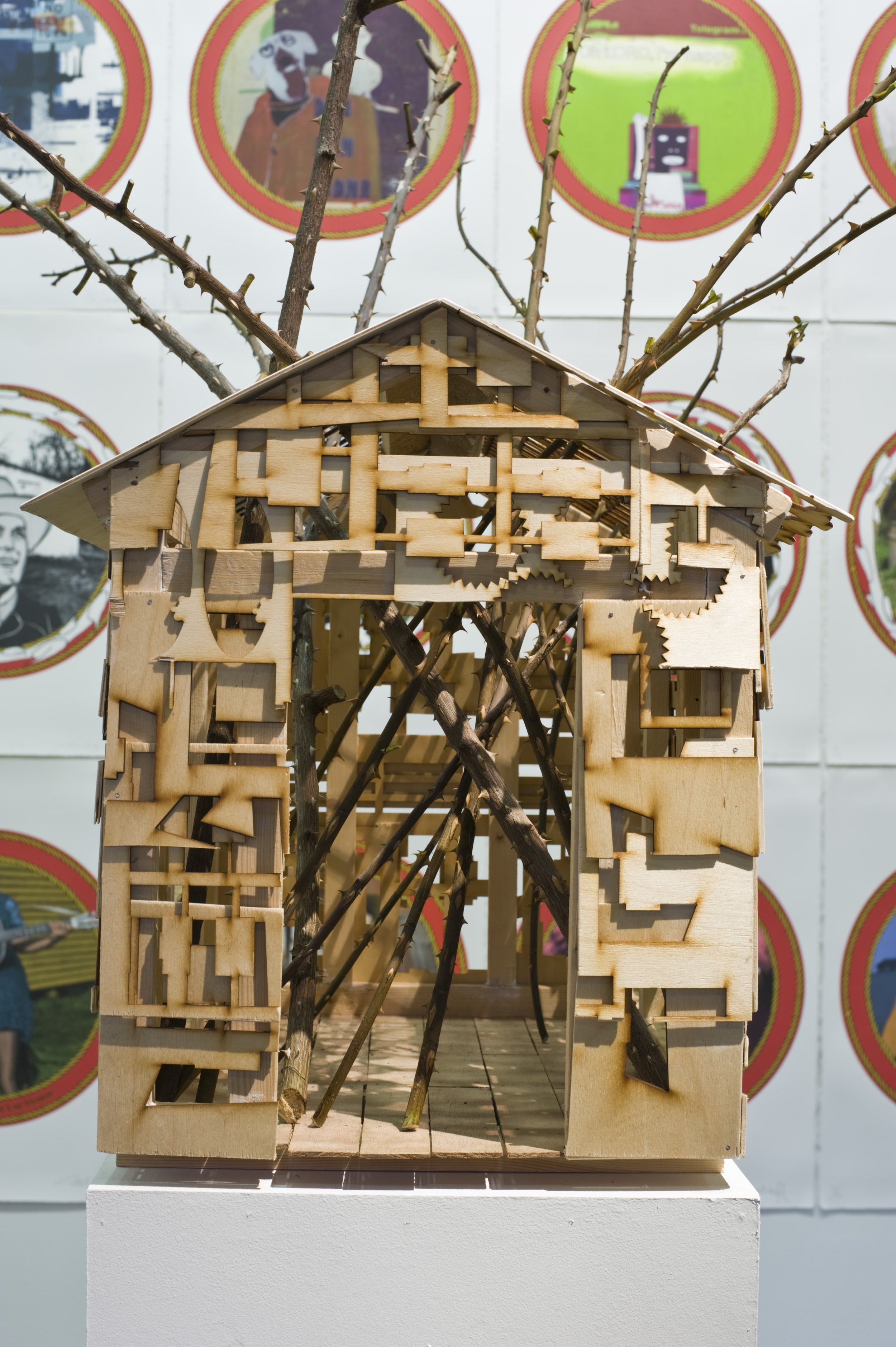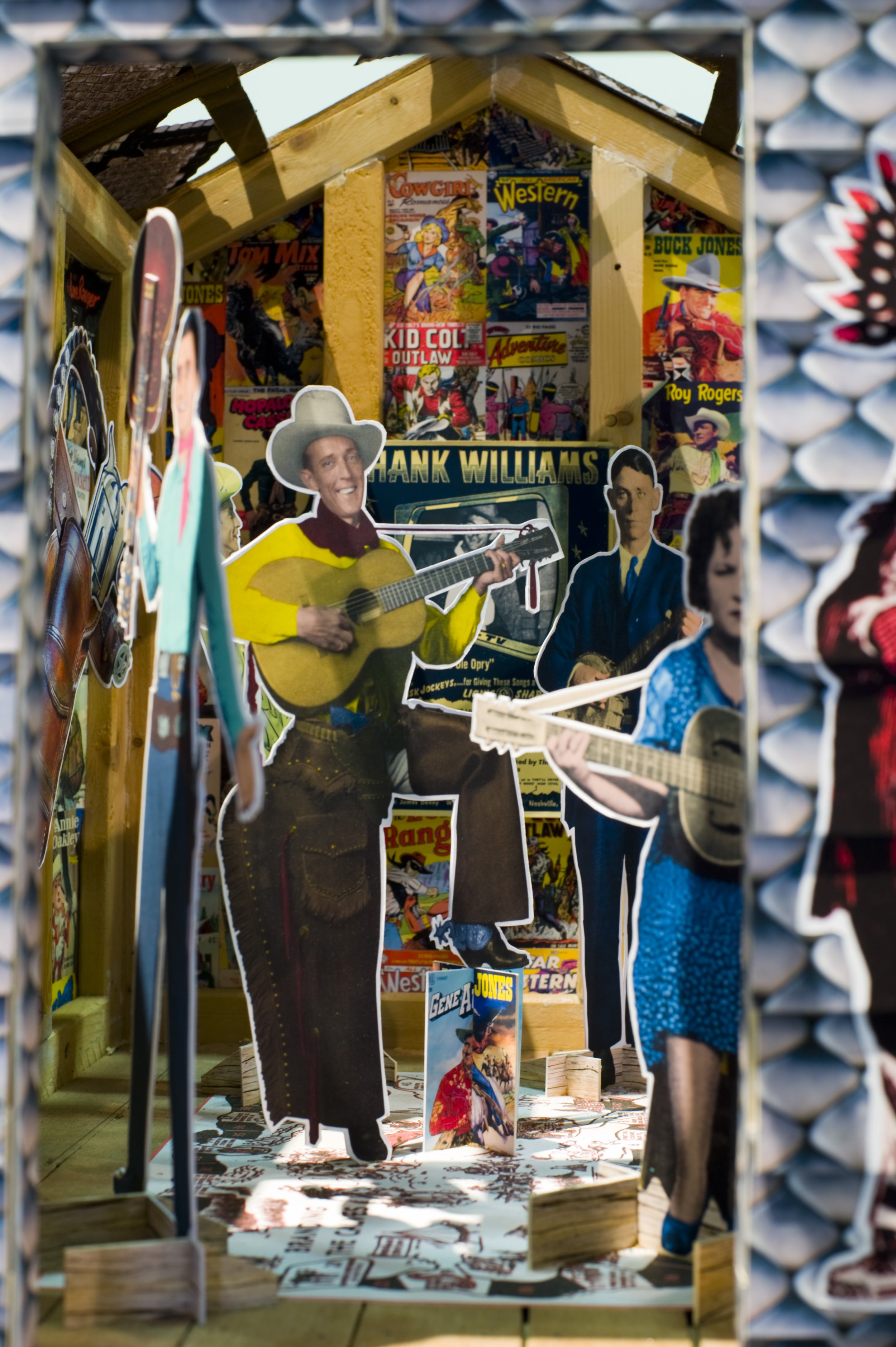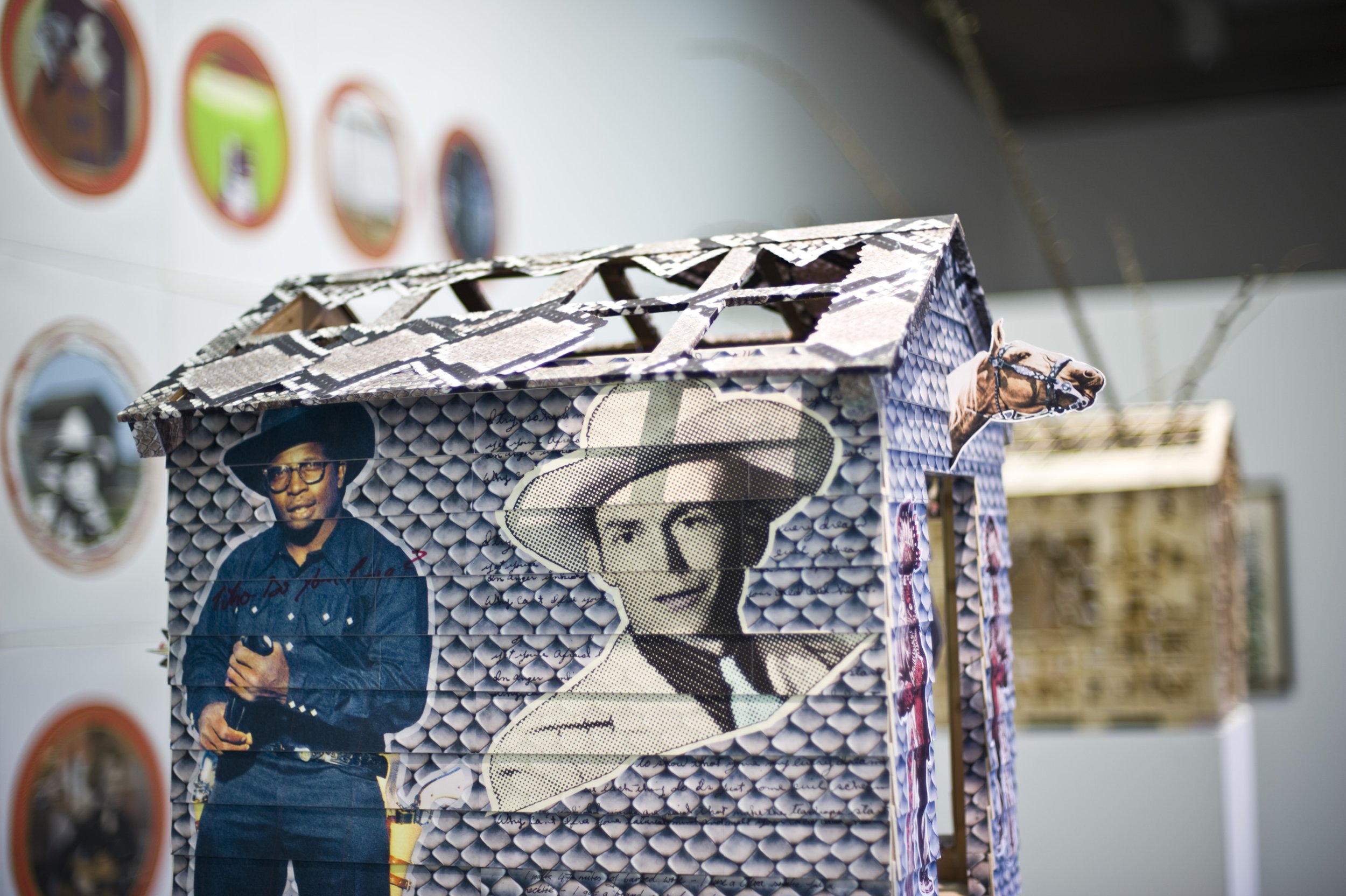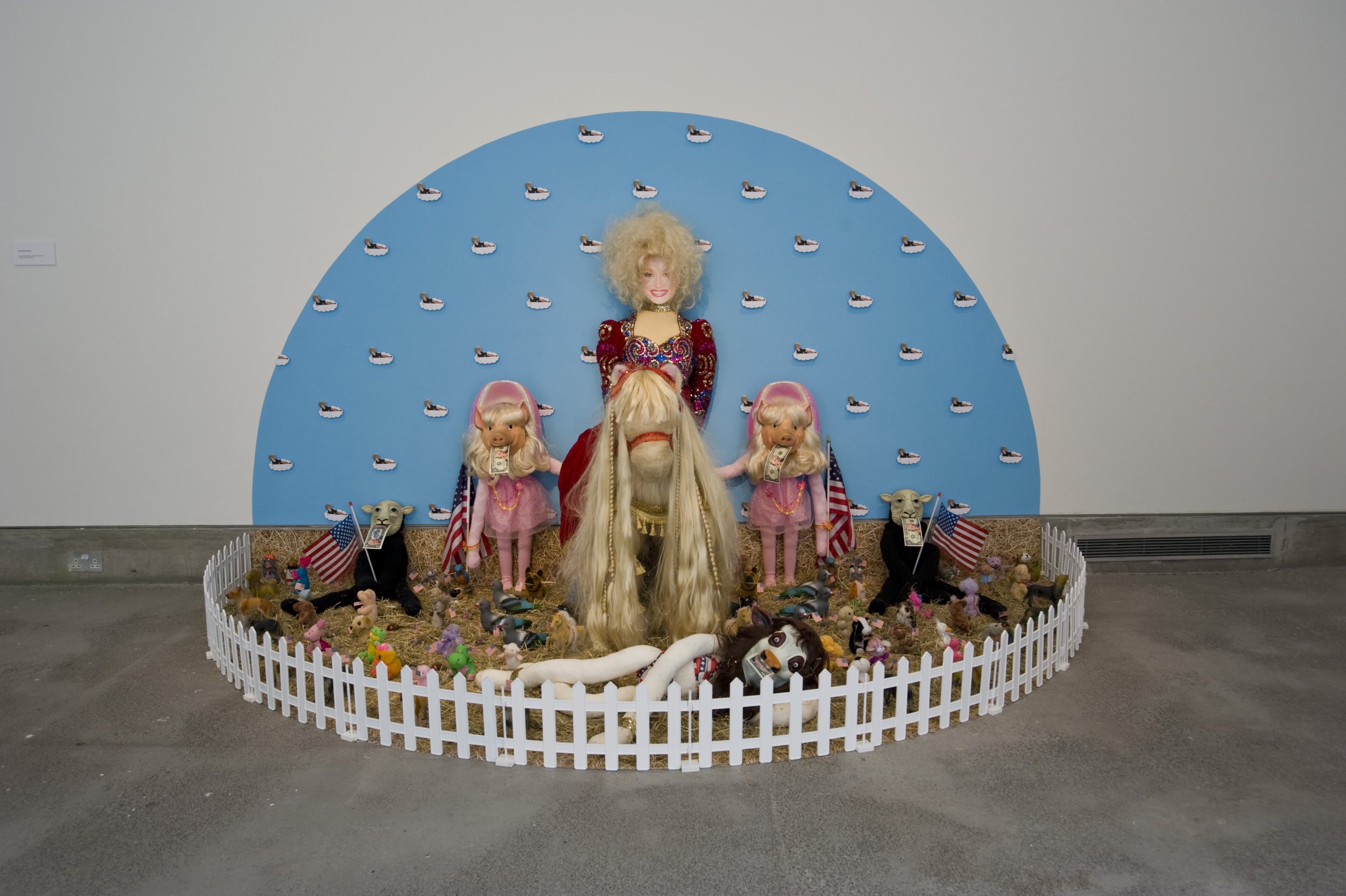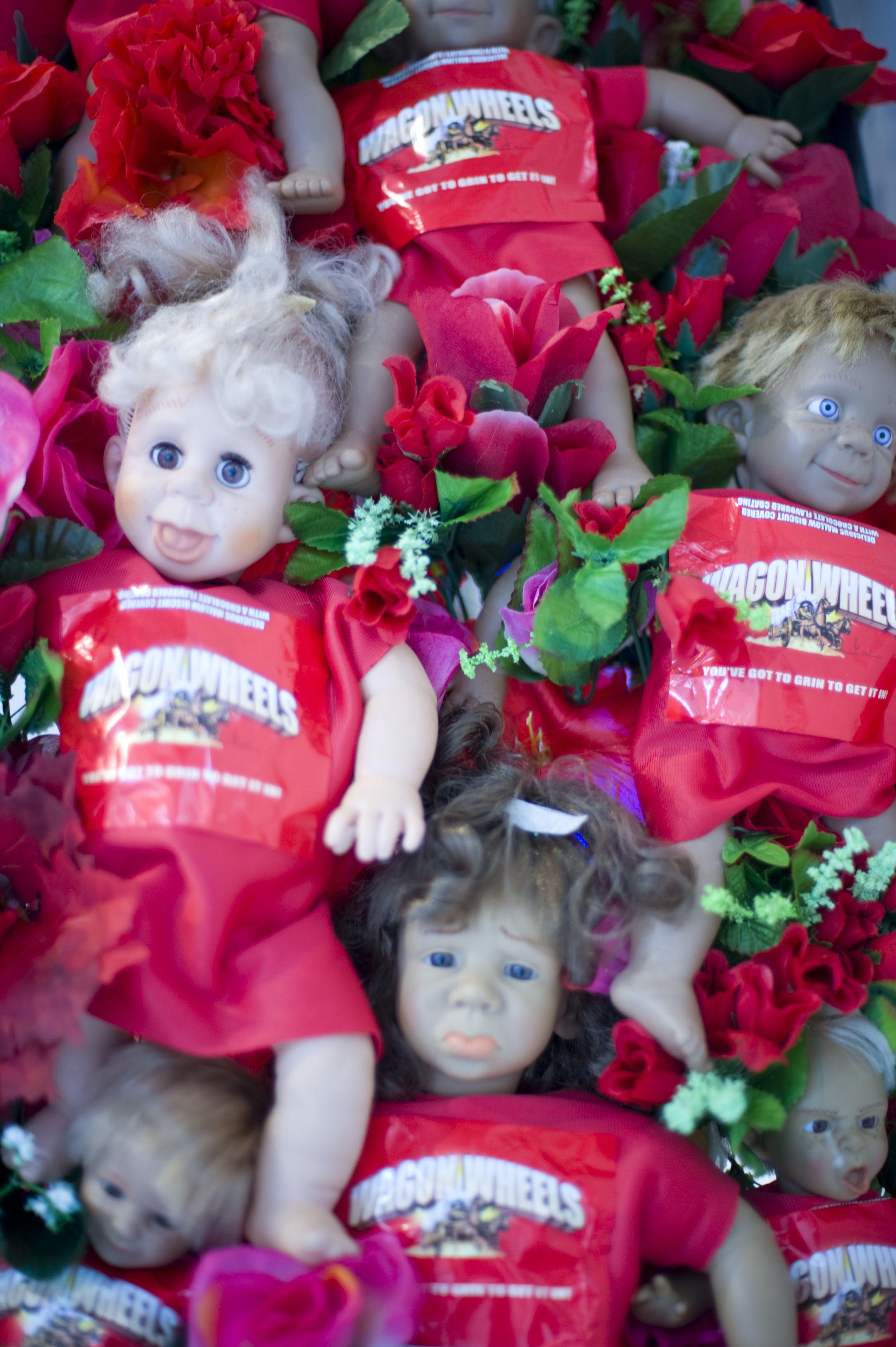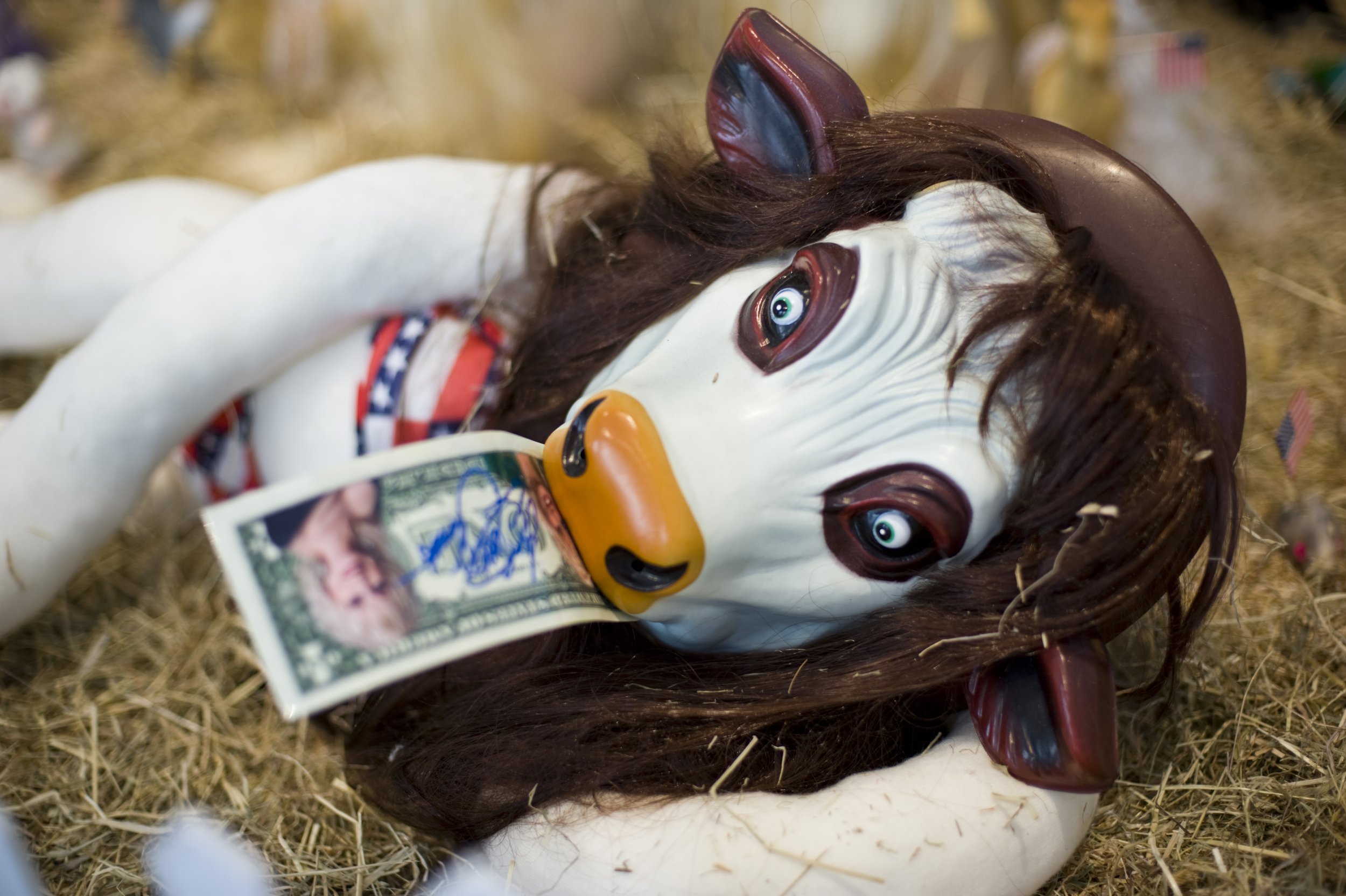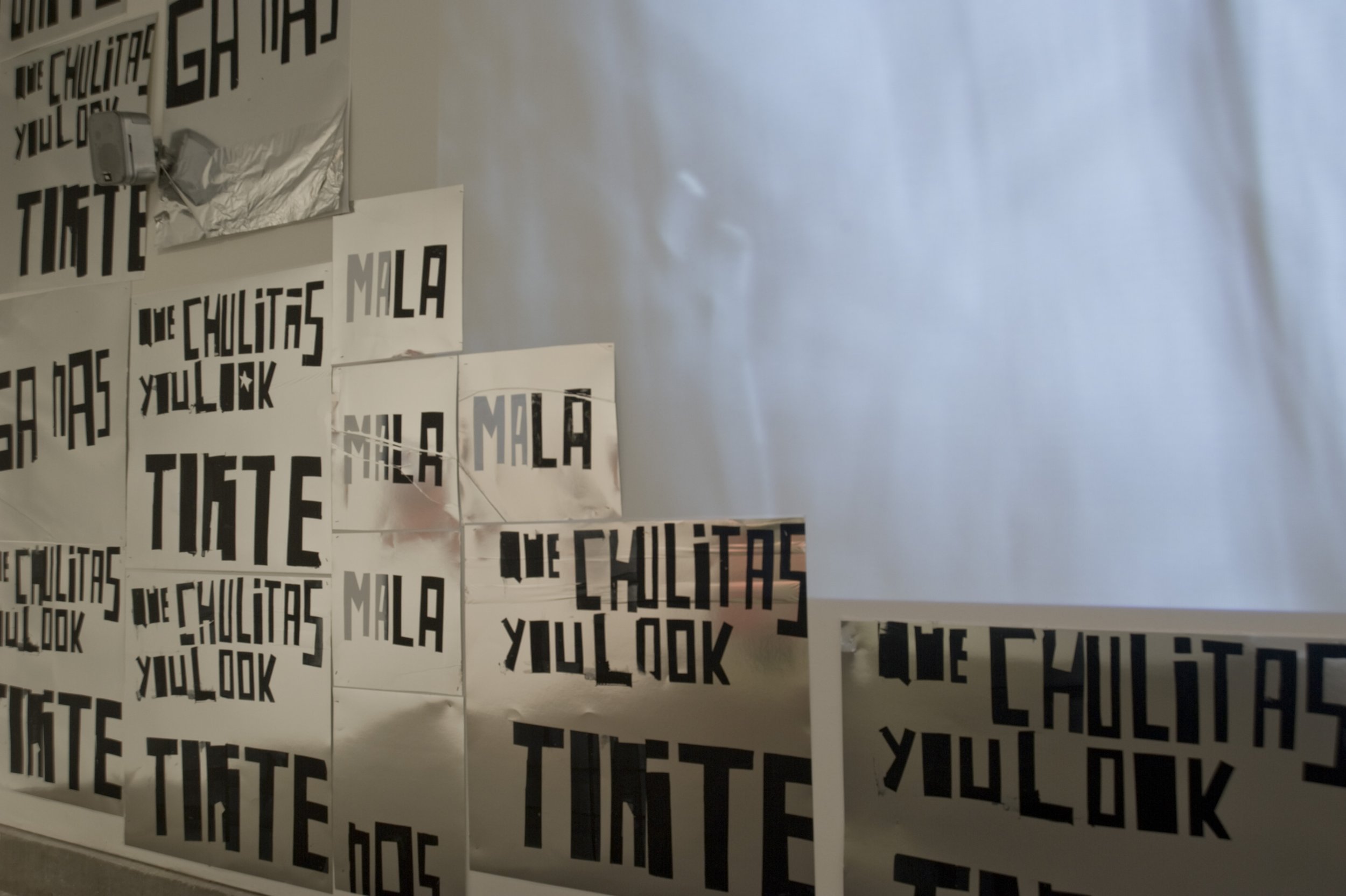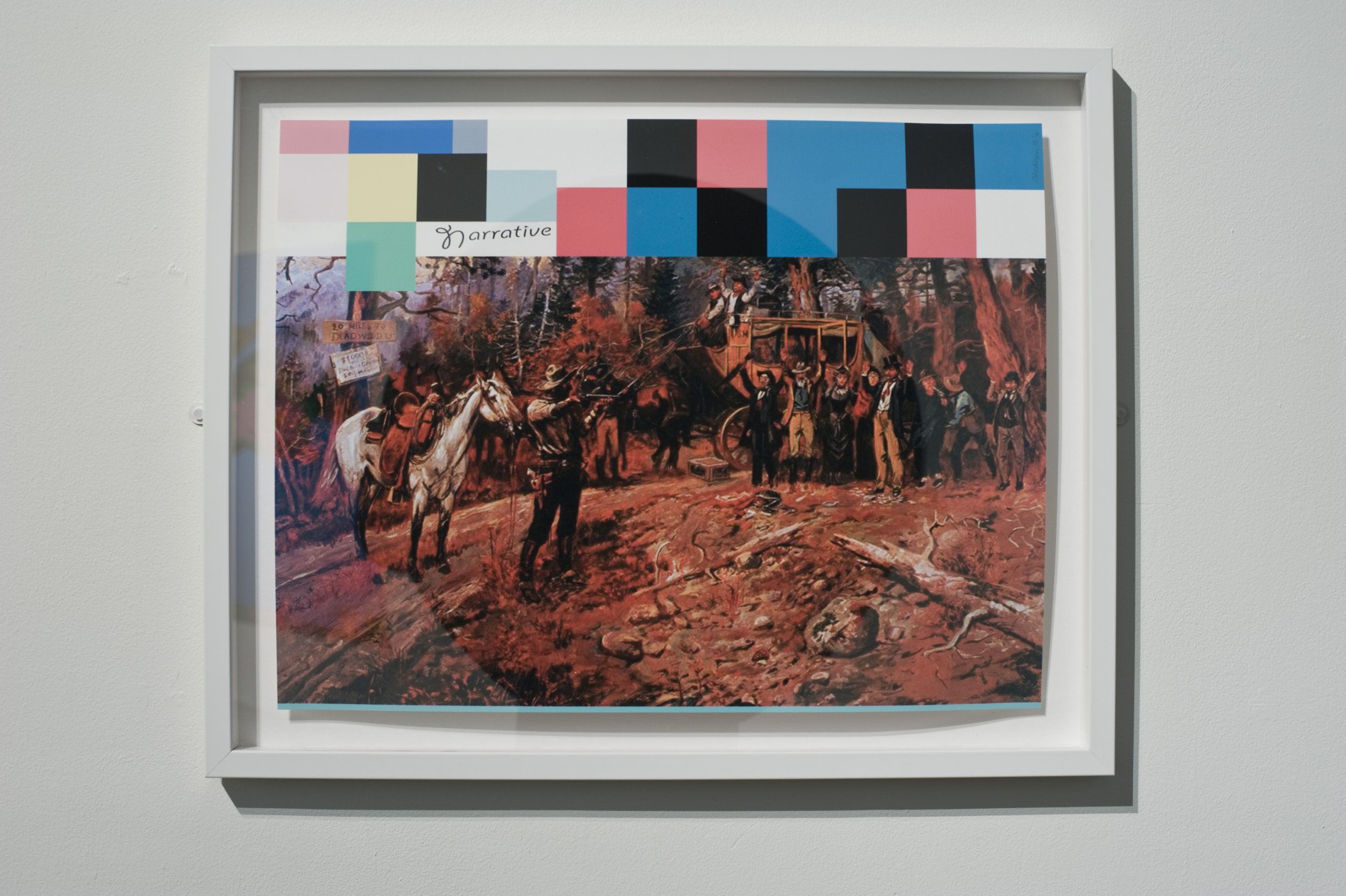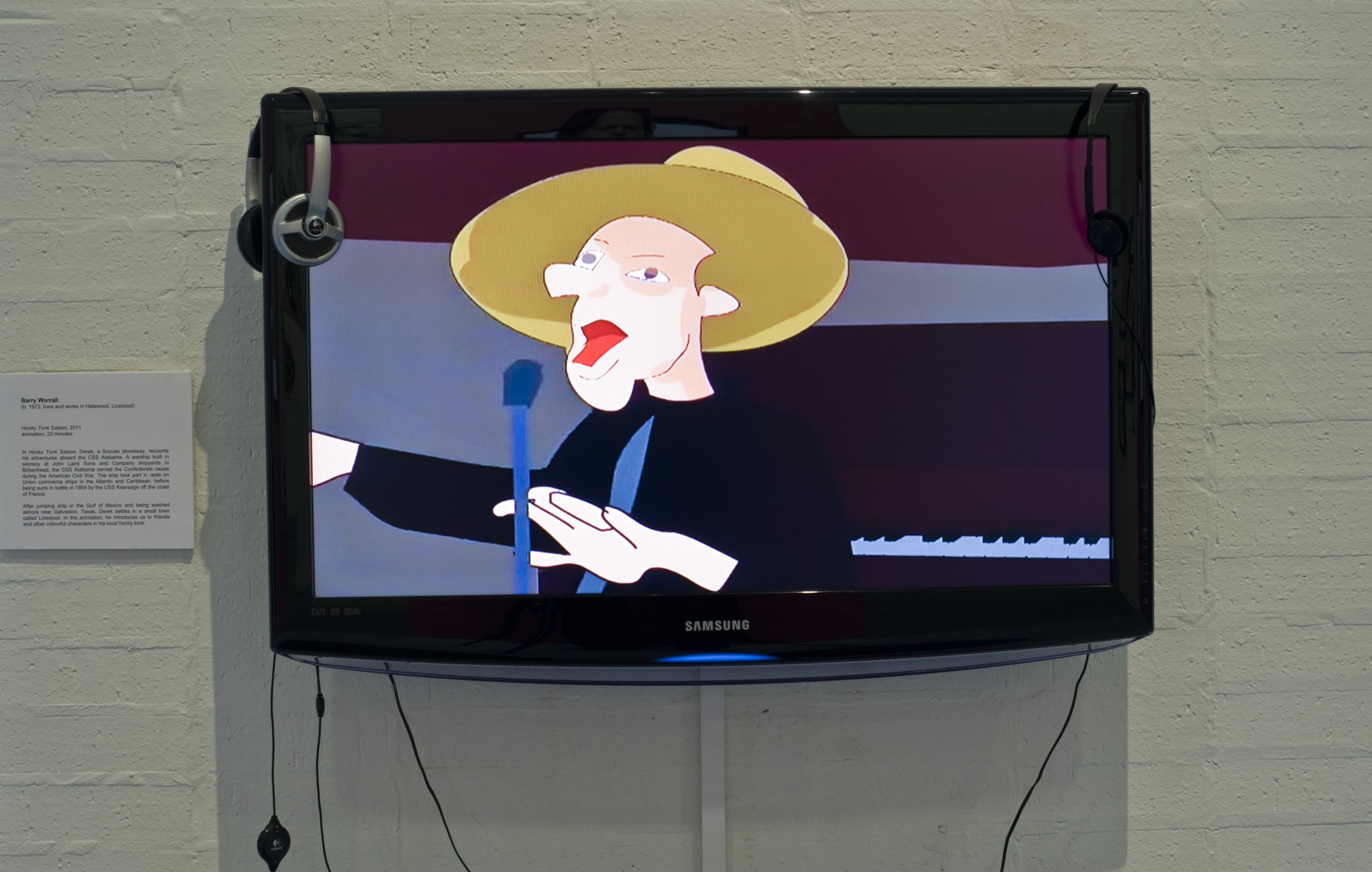HONKY TONK
The Bluecoat, Liverpool
July 22 – September 18, 2011
Featured artists: Mike Badger, Ed & Linda Blackburn, Derek Boshier, Jim Burton, Randall Friedman, Steve Hardstaff & Neil Morris, Henry Horenstein, Norman Killon, Bruce Lee, Nicki McCubbing, Mark McNulty, Cruz Ortiz, Trish Simonite, Barry Worrall, Chen Xinpeng & Wong Hoy Cheong
Honky Tonk was a group exhibition which investigated a country and western aesthetic found in Liverpool music and popular culture. The artists’ work responded to and referenced similarities between Liverpool, Austin, Memphis and other American cities through painting, video, photography and installation. Infused with irony, humour and playfulness, the show explored honky tonk pleasure through language, behaviour and the d-i-y nature of entertainment.
In early 20th century America the honky tonk was recognised as a rough establishment serving drinks and cheap food to a working class clientele, featuring live music and, of course, dancing. Oftentimes just a modest shack, the honky tonk featured simple wooden furniture and basic furnishings. In later years, the jukebox, neon beers signs, pool tables and cowboy artwork became part of the standard decor. As places of pleasure and leisure, the honk tonk still remains a unique experience.
Most household names in country music started out in anonymous honky tonks before reaching stardom at the Grand Ole Opry in Nashville, Tennessee. Songs like Hank Williams’ “Honky Tonk Blues” to Gram Parsons’ “Close up the Honky Tonks” immortalised such establishments. In the 1980s the honky tonk was popularised as a social space in its depiction in Urban Cowboy, a film starring John Travolta and Debra Winger. Here a mega-sized honky tonk provided the backdrop to drinking, dancing, bull-riding, fighting and above all the search for love, in all the wrong places. Cross the Atlantic to Liverpool, a place where Johnny Cash’s “Ring of Fire,” a solid favourite of football fans, regularly rings out from the terraces at Anfield.
According to music historian Kevin McManus, Liverpool has been the “Nashville of the North” since the 1950s. The city benefitted from transatlantic shipping traffic as sailors and travellers brought home records from the United States that were hard to find in the UK. Even the Beatles embraced country music in their early recordings. Burtonwood, a nearby American airforce base, also made a crucial impact bringing the city into direct contact with music from the Southern states and spawning home-grown country from the likes of Hank Walters. Performers like the Hillsiders and Birkenheads’s Charlie Landsborough carried on that tradition, whilst the connection to Texas continues with local musicians like Mike Badger who regularly plays at the SXSW showcase in Austin.
But ultimately, the stories and style of country music, which allowed for lots of people to sing and join in, plus perhaps the glamour of Western fashion, was what made Liverpool’s country scene thrive. An energetic fascination with cowboy culture was also evident: Buffalo Bill visited in 1891 and in the 1950s Roy Rogers stayed at the famous Adelphi Hotel with his horse, Trigger. In the 1950s and 60s pubs along the dock road were the equivalent of honky tonks you might have found in Texas or Tennessee. The music country scene is not now so vibrant in Liverpool, but the legacy of its honky tonk past can still be found in popular spots like Ye Cracke, The Pilgrim, The Jacaranda, Coopers and Smokey Mo’s. And just 50 miles up the road you will find Fort San Antone - Europe’s largest honky tonk.
Read a BBC News story about Honky Tonk here
Installation images by Jon Barraclough
